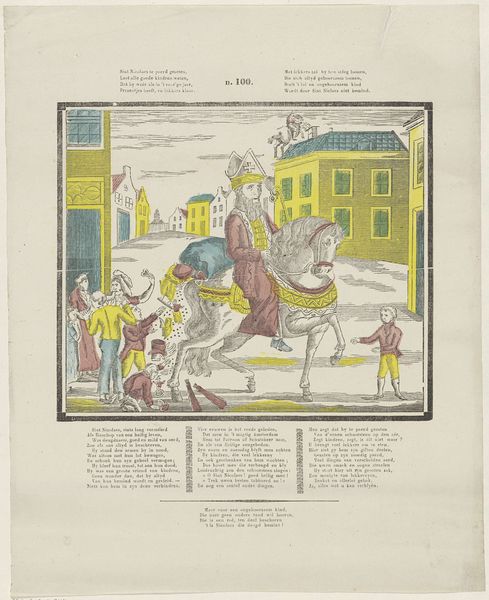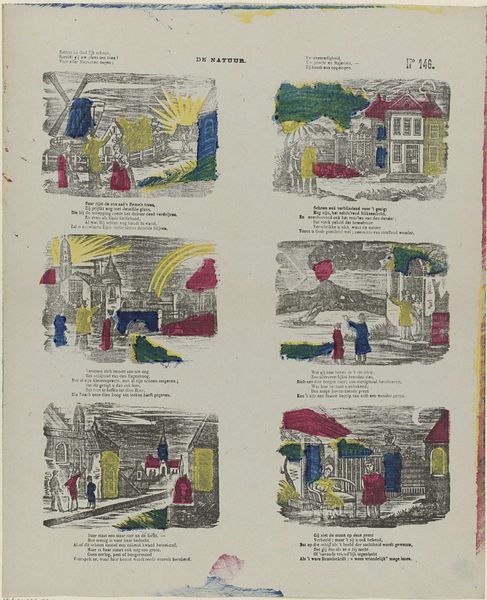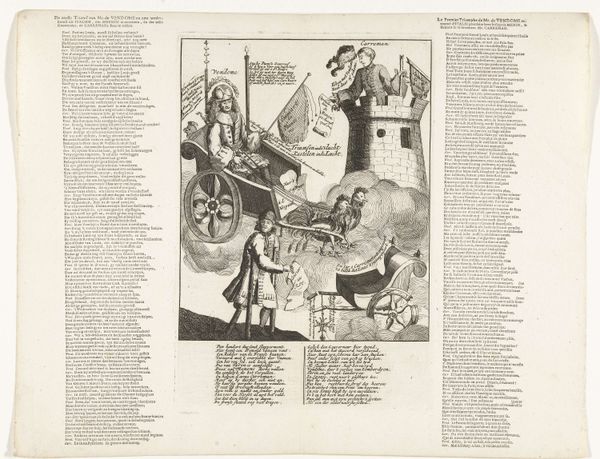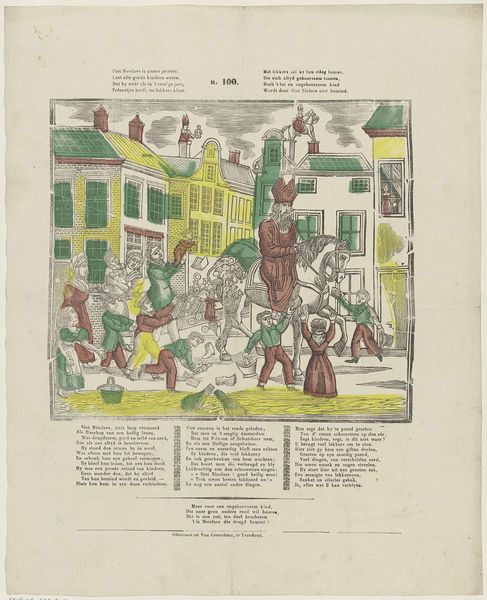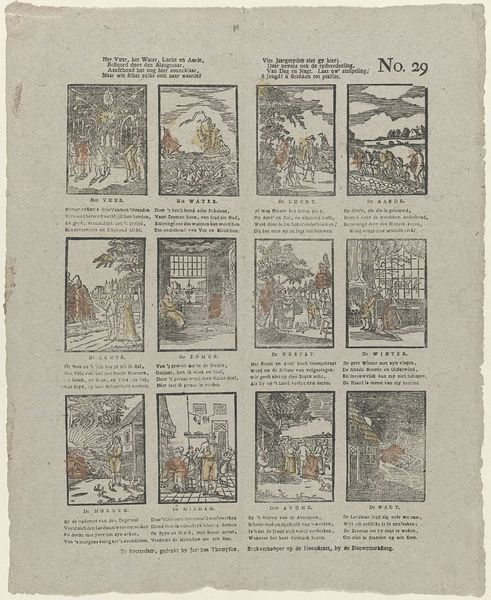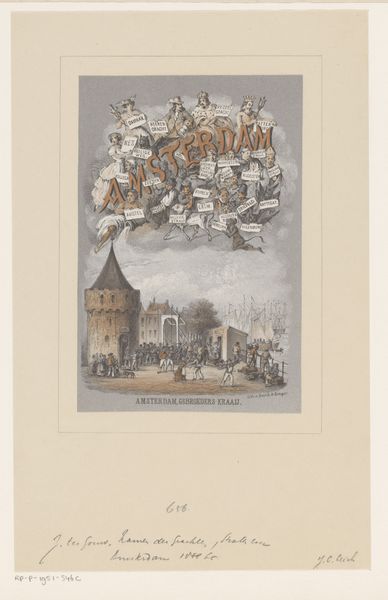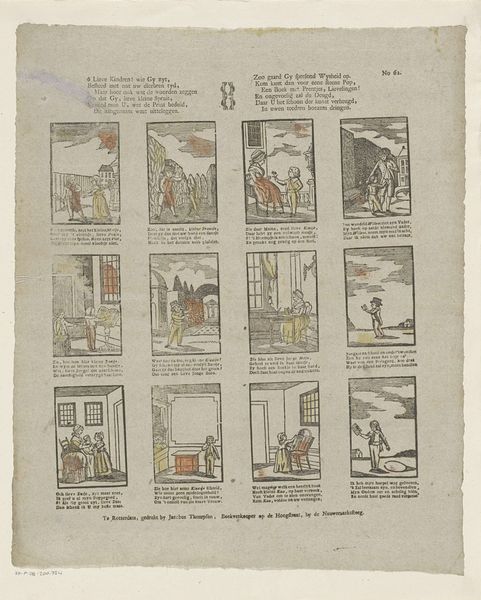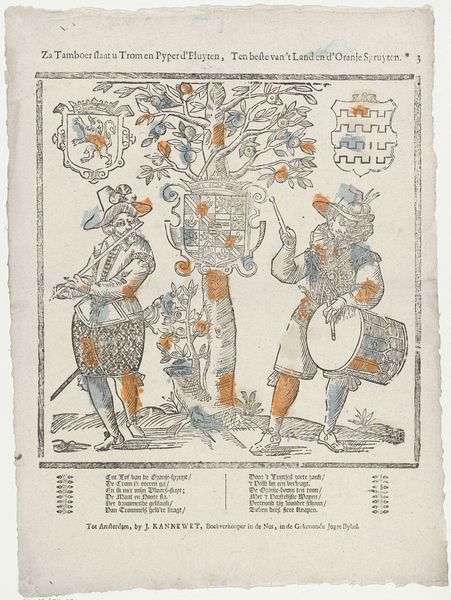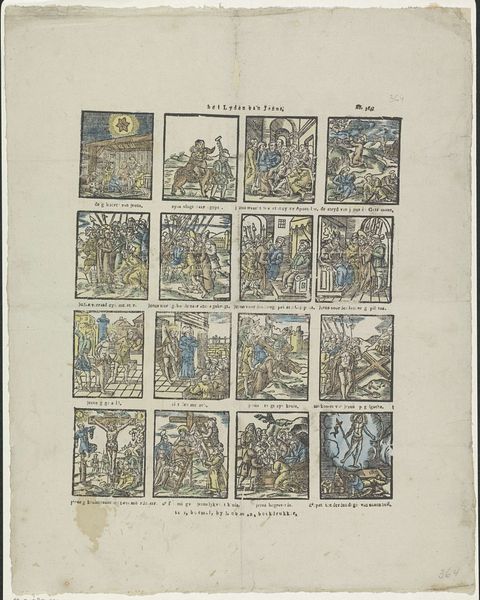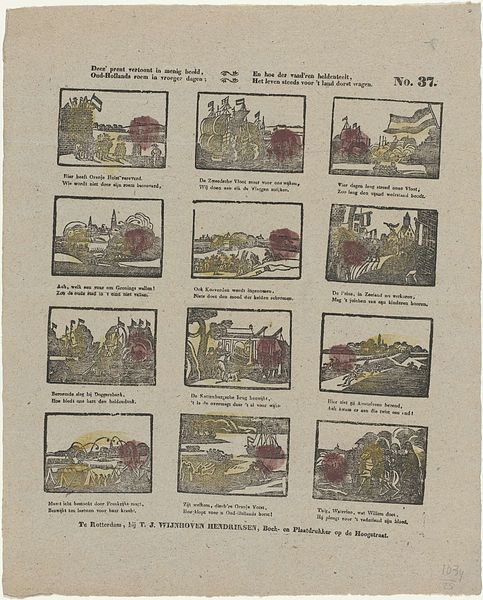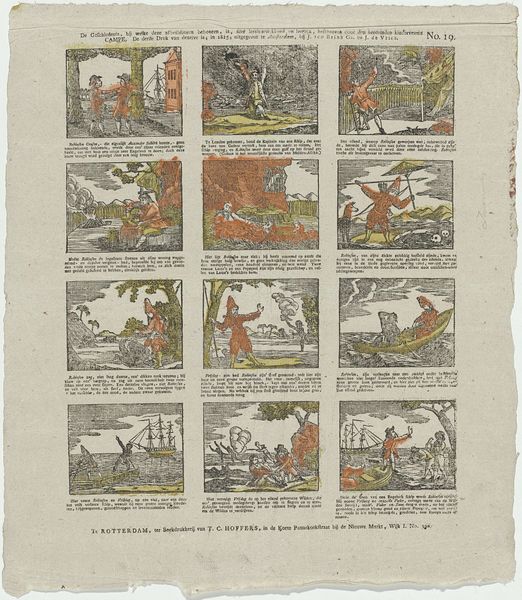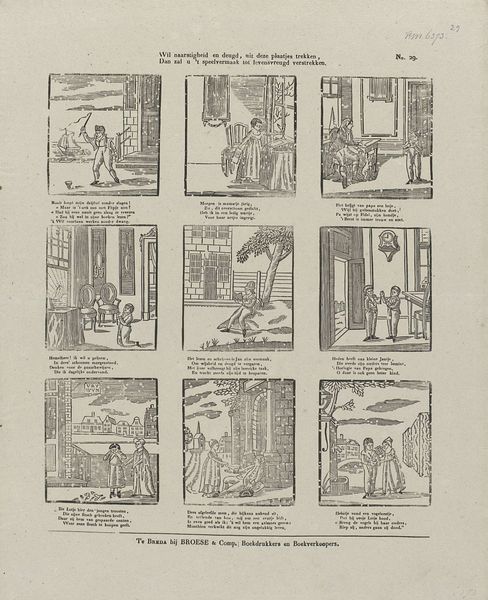![Sint Nicolaas te paard gezeten, / Laat alle goede kindren weten [(...)] by Glenisson & Zonen](/_next/image?url=https%3A%2F%2Fd2w8kbdekdi1gv.cloudfront.net%2FeyJidWNrZXQiOiAiYXJ0ZXJhLWltYWdlcy1idWNrZXQiLCAia2V5IjogImFydHdvcmtzLzRkNDljN2Y3LWRkMDUtNDMwMC04NGEwLWM4MDlhMDVjYmYzZi80ZDQ5YzdmNy1kZDA1LTQzMDAtODRhMC1jODA5YTA1Y2JmM2ZfZnVsbC5qcGciLCAiZWRpdHMiOiB7InJlc2l6ZSI6IHsid2lkdGgiOiAxOTIwLCAiaGVpZ2h0IjogMTkyMCwgImZpdCI6ICJpbnNpZGUifX19&w=3840&q=75)
Sint Nicolaas te paard gezeten, / Laat alle goede kindren weten [(...)] 1856 - 1900
0:00
0:00
graphic-art, print, woodcut
#
graphic-art
#
comic strip sketch
#
quirky illustration
#
narrative-art
# print
#
old engraving style
#
folk-art
#
woodcut
#
cityscape
#
genre-painting
Dimensions: height 388 mm, width 320 mm
Copyright: Rijks Museum: Open Domain
Curator: This vibrant print is titled "Sint Nicolaas te paard gezeten, / Laat alle goede kindren weten [(...)]" which translates to "Saint Nicholas on Horseback, / Let all good children know [(...)]", dating roughly from 1856 to 1900. The artist is Glenisson & Zonen. The medium is a color woodcut—a technique where the image is carved into wood, inked, and then printed. Editor: Well, my first impression is pure whimsy. It's so bright, even with the age. It feels like peering into a very charming, slightly tilted storybook. I am captivated by the hand-colored touches; each shade seems deliberately applied to enhance the joyful, carnivalesque mood. Curator: That "whimsy," as you put it, points directly to its function. These prints were popular ephemera. Cheaply made but colorful, sold around Saint Nicholas Day as souvenirs or gifts. This print depicts Saint Nicholas—or Sinterklaas, as he’s known in the Netherlands—a hugely important cultural figure associated with gift-giving. The image isn't just decorative; look at the verses around the image—they tell the story and reinforce the morals of the holiday. The narrative itself emphasizes social behaviour, community expectations, and reward distribution; and for those "good kids," a not so subtle warning. Editor: You’re right, there’s definitely a coded message happening there. I keep going back to the details, though; there's such personality imbued in such simple lines. That little boy at the edge of the road… almost indifferent. Maybe this all hits home because this is the kind of print that feels handmade, relatable... It pulls at that thread of nostalgic remembrance in us all. Curator: Nostalgia is definitely at play! These prints speak to constructed childhood ideals but are essential cultural documents. They allow us to explore and scrutinize class, commerce, and how moral structures perpetuate and mutate generationally. We must ask, too, who *defines* the 'good children' the poem addresses. Editor: Precisely! So, here we are. What began as sweet now provokes a delicious unease, because art—even seemingly simple folk art—mirrors ourselves back to us… It tickles and accuses. Curator: Absolutely. And through studying objects like these, maybe we, too, become those "good children," understanding and acknowledging where we come from.
Comments
No comments
Be the first to comment and join the conversation on the ultimate creative platform.
